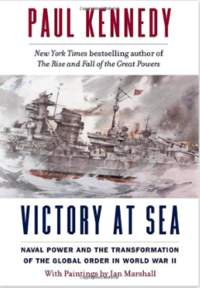OFF THE SHELF: JUNE 2022

OFF THE SHELF: JUNE 2022
This month, hegemonic naval battles, Victorian art and a swipe at 'Oxocracy'
Published: 23 June 2022
Author: Richard Lofthouse
Share this article

How We Might Live: At Home With Jane and William Morris by Suzanne Fagence (Quercus Books, 2022, HB, £25)
William Morris - poet, designer, campaigner, hero of the Arts & Crafts movement - was a giant of the Victorian age, and his beautiful creations and provocative philosophies are still with us today: but his wife Jane is too often relegated to a footnote, an artist's model given no history or personality of her own.
In truth, Jane and William's personal and creative partnership was the central collaboration of both their lives. The homes they made together - the Red House, Kelmscott Manor and their houses in London - were radical works of art in themselves, and through them they explored how we all might live a life more focused on beauty and fulfilment.
In How We Might Live, published in June, Suzanne Fagence Cooper (Merton, 1988) explores the lives and legacies of Jane and William Morris, finally giving Jane's contribution the attention it deserves and taking us inside two lives of unparalleled creative artistry. Suzanne is an art historian and was a curator at the V&A for twelve years. She is the author of Effie, the biography of Effie Gray.

Chums: How a Tiny Caste of Oxford Tories Took Over the UK by Simon Kuper (Profile Books, 2022)
The author (Lincoln, 1988) is well-acclaimed for his work on football, and a first-rate journalist at the Financial Times. This book takes aim at his own cohort from late-80s Oxford, the current Prime Minister, and around him Michael Gove, Daniel Hannan, Dominic Cummings and Jacob Rees-Mogg. He’s got Brexit squarely at the forefront of his mind. He puts them all together in a magical pot, gives it a brisk stir, and argues that ‘had [they] received rejection letters from Oxford aged seventeen, we would probably never have had Brexit.’
As an Oxford student newspaper summed up earlier this year when the book first appeared, evidently from a Remain vantage, does this mean that Oxford ruined Britain?
It’s totally impossible to defeat such a sweeping and unprovable argument, illustrating as Kuper readily admits that he too was touched by aspects of a tutorial system he attacks, ‘[learning] how to write and speak for a living without much knowledge.’
The book is not scholarship but note taking and scorecard filling. It’s a lively and amusing read. Kuper, who also writes in Dutch and grew up in South Africa, makes some clever and well-judged insights worthy of an ‘insider-outsider.’
For example, he argues that the upper class, radiating out from Etonians like Boris Johnson, were (and presumably are) a living and breathing illustration of class solidarity that Marxists could only have dreamt of, all very ironic given how broadly anti-Thatcher the University was in the 1980s.
Whatever you make of the book, the main point has to be that Oxford in the 1980s and early 90s was not, for the majority of students, remotely like the Oxford recounted here.
The even bigger point would be that it is even less recognisably like that now. On that note Andrew Adonis, (Keble, 1981), has put it rather well in Prospect:
‘The old public-school tone and culture of Oxford now has more in common with Jeeves and Wooster than Jesus and Worcester. Kuper has hammered another nail in its coffin, but Oxford itself has undertaken most of the transformation already. Rather than constrain its growth artificially, we should let it flourish in its new guise’.

Victory at Sea: Naval Power and the Transformation of the Global Order in World War II by Paul Kennedy, with paintings by Ian Marshall.
Given how rapidly the world is changing right now, it feels almost like an inter-generational effort to go back to World War Two yet again; has the tale not been told enough, by now?
If any single volume can muster a hearty ‘No!’ to that question it must be this one.
Paul Kennedy (St Antony’s, 1970), long an acclaimed and famous professor of history and strategic studies at Yale University, established his trademark style for lucid, deceptively easy to read analysis of massive subjects when he published The Rise and Fall of British Naval Mastery in 1976. The book remains masterly even now, and as a single volume might be all you ever need if you wanted to grasp the subject of the title.
What we have here is the same approach to the entire theatre of World War Two, and thus six navies in particular: United States, Great Britain, Japan, France, Italy and Germany.
The span of time is 1936-46, and during that time the entire world order changed swiftly and irrevocably, with America emerging as the ultimate victor.
What we also have are simply superb paintings by the late Ian Marshall. Far from being merely aesthetic they seize on both ordinary and pivotal moments to bring a lump to your throat, in particular (for this reviewer) the double page spread depicting a US submarine, USS Archer, stalking Japanese super-carrier Shinano, in Honshu in 1944.
A famous moment in US naval history, the watercolour medium perfectly captures the watery stain that depicts a hulking killer, almost invisible but not quite. It would subsequently launch six torpedoes. The 72,000-ton carrier would sink within a few hours, the largest ship ever to be sunk by a submarine at the time.
By bringing visual acuity to these moments –and make no mistake, Yale University Press have put on a lavish spread for an inflation-busting price– the panoply of the subject is brought to life in a most extraordinary and original manner.
All said and done, the narrative goes like this. In 1939 on the eve of the war, the allied powers had enormous dominance of surface warships, with 37 capital ships to the Axis powers’ 18. The only vessel-type where this wasn’t the case was submarines.
By the Spring of 1942 the allies were in dire straits, having suffered huge damage in all the main theatres of the conflict, the Atlantic, the Mediterranean and the Pacific.
But America got its entire economy whizzing – Churchill called it ‘that gigantic boiler’ – so it could despatch a new aircraft carrier almost monthly at the height.
And brilliant men and woman did the rest, Kennedy very careful to weigh the materiel against the actual and real role of individual humans.
What we have here is the Naval history equivalent of Fernand Braudel’s two volume history of the Mediterranean in the age of Philip II; Braudel referenced towards the end and of course himself caught up in the conflict and interned in a German POW camp.
A wonderful book, and perhaps to be complemented soon by someone else’s equivalent analysis of the rise of China as a naval power, the unseen and mostly untold narrative of the past decade.
Off the Shelf typically concerns books where there is an Oxford connection, whether the place, the University or of course the author.
Alumni can claim 15% discount in any Blackwell's store with a My Oxford Card.
Alumni can claim 20% discount at Oxford University Press.
Details about the Oxford Alumni Book Club are at: www.alumni.ox.ac.uk/book-club















